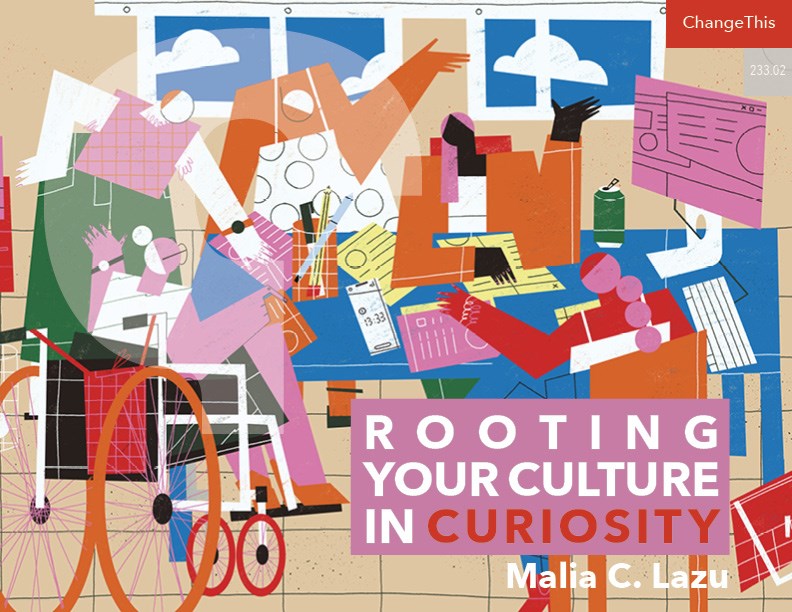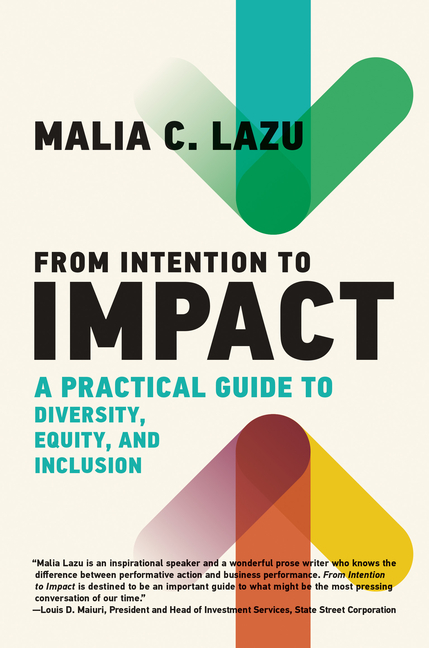Rooting Your Culture in Curiosity
February 14, 2024
Your workplace culture can either foster or inhibit a sense of belonging, writes Malia C. Lazu. To ensure the success of your diversity, equity, and inclusion efforts, it is crucial to cultivate a culture of curiosity.
It was 2010, and I had become a burned-out organizer trying to stop the justice system from criminalizing young boys and girls of color. No matter how hard we worked, we couldn’t seem to make any progress. Everywhere I turned there were barriers and obstacles; even when invisible, they were insurmountable.
And then I came across a quotation from Peter Drucker: “Culture eats strategy for breakfast.”
I read and reread those words, and after about the fifth time I started to cry, not just tearing up but snotty, ugly crying. Drucker’s five words changed the course of my work forever.
As a community organizer working in twenty-six states, I was trying to get America to adopt a strategy that was incompatible with a culture that only knew how to criminalize black boys and girls, a culture that accepted that blacks are 3.23 times more likely than whites to be killed by police. I had spent years thinking the only reason we were not changing that brutal fact was because we didn’t have the right strategy, and that once we finally found it, we just needed to ensure we had sufficient time and money to implement the strategy.
Drucker’s words, however, rang like truth in my heart, helping me realize that the dominant culture in America was swallowing the sound strategies that would decriminalize the system and spitting them back out as diluted, ineffective change.
It showed up in blaming voters for not voting rather than acknowledging the
understandable distrust of democracy by people who have been excluded by the system, as well as in voter suppression and other efforts (moving polling places, purging voter rolls) meant to disenfranchise people.
From my time as an organizer, I took this sobering realization and Drucker’s words and brought them into my work with business organizations. The message I deliver, time and again, is that even the biggest and best strategies for DEI will get eaten up in middle management and lost amid other aspects of work culture. A perfect example is how biased processes get embedded in meritocracy cultures that reward the status quo, without acknowledging how the broader base of highly qualified, diverse talent is overlooked.
This is the starting place to set up any DEI effort for success: knowing there are elements in your culture that will stop a DEI strategy from being implemented.
When I deliver that message to clients, I’m often greeted with assurances such as “our culture embraces diversity.” But the words in a mission or values statement are not sufficient to excavate and eliminate biases, conscious and unconscious, that have existed within a culture for years— even back to the founding of the company.
There are many definitions of culture. Broadly, culture can be considered a set of shared norms, values, traditions, beliefs, arts, and behaviors across a particular group of people. Communication in all its forms— oral, written, visual, and nonverbal— reflects the cultural fabric and patterns of groups and organizations. Those cultural patterns include how people attach value to objectives, achievements, status, ideas.
The more entrenched these signs and symbols are, the more they become part of the norm that is revered to the point of being unquestioned. Their influence cannot be overestimated because they define how people view themselves and their standing within an organization or society.
Business culture is rooted in an organization’s history and traditions, including the beliefs and behaviors that guide shared assumptions and norms accepted by the group. The culture of an organization may have taken root decades, even centuries, ago and continued through current management. Examples include health care companies that are rooted in discovery and improving health, or industrial companies that tout a legacy of ingenuity and powering progress. The same applies to startups, which by and large reflect the mission and vision of the founder.
Over time, culture becomes institutionalized, with policies, procedures, and systems in place, such as those for hiring, promoting, and compensating people. Values become codified and let people know what matters most, whether that’s innovation in a “break things” culture or compliance in a more buttoned-down environment.
Regulations and other external factors also shape a business and its culture. For example, in banking, regulations interject values, such as protecting people from fraud or predatory practices. In utilities or manufacturing, safety and security concerns impose expectations for how operations will run.
Over time, business models are created to serve customers with products and services. Often these become inextricably linked with culture as consumers equate the products they use with the brand, and therefore the company. Apple is a perfect example of this, with its products, name, and logo homogenizing into a single experience.
Similarly, investors and their expectations can shape culture. An example is the current trend in environmental, social, and governance (ESG) investing, which at best encourages genuine strides toward sustainability and at worst is only greenwashing to provide the appearance of it.
Not all investor interests align, however, as the culture of private capital investing puts an unblinking focus on generating a return, which is diametrically opposed to social impact investing that seeks to do good as opposed to only doing well.
To create a culture in which diversity is truly valued, an organization needs to develop a curious culture. People become genuinely more curious to learn about and connect with others instead of just being concerned about losing their power or position within a company.
And that’s where this discussion begins: defining curiosity in this context and examining why it is important for cultural change.
The Power of Curiosity
When Harry Belafonte was invited to the White House by President John F. Kennedy, he was unsure whether he should go and, if he did, what he should do or say. He sought the counsel of Dr. Martin Luther King Jr., who knew the importance of Belafonte going. King said to him, “Find his moral center and win him to our cause.”
Belafonte often repeated this story in front of investors and donors to remind them of their moral center. He obviously helped win Kennedy to the cause and did it through being curious about his values. In turn, Kennedy became more curious about black people and their experience in America, including the need for greater inclusion. That’s the power of curiosity.
In their 2015 book, The Power of Curiosity: How to Have Real Conversations That Create Collaboration, Innovation and Understanding, Kristen Siggins and Kathy Taberner suggest that curiosity is “being inquisitive, seeking to learn and understand,” and can “help us successfully navigate our transition from the hierarchical Industrial Age to the more collaborative Information Age.”
This idea can be extended to the collaborative nature of DEI work and our transition from the racist times of the Industrial Age to the more collaborative times of equity and justice. Curiosity is essential, promoting genuine interest in others and their experiences.
One big distinction Siggins and Taberner draw is between being curious and being nosy. Being nosy is about judging and comparing, with the intent “not to learn but to compare, perhaps wanting to determine who is better or worse.”
We all probably have that neighbor or older relative who asks us how we’re doing but really is just digging for details (and sometimes dirt). For example, after my friend’s sister died, community members began inquiring about care for her special needs child, not because of wanting to help but to see if they could fault the arrangements the family was making. This happens in corporations as well as in communities.
In suggesting a new communication paradigm, one that moves from telling and judging to asking and accepting, a company sets a standard that does not seek to blame or exclude other perspectives. Rather, by promoting curiosity, a company can establish a culture anchored in belonging.



